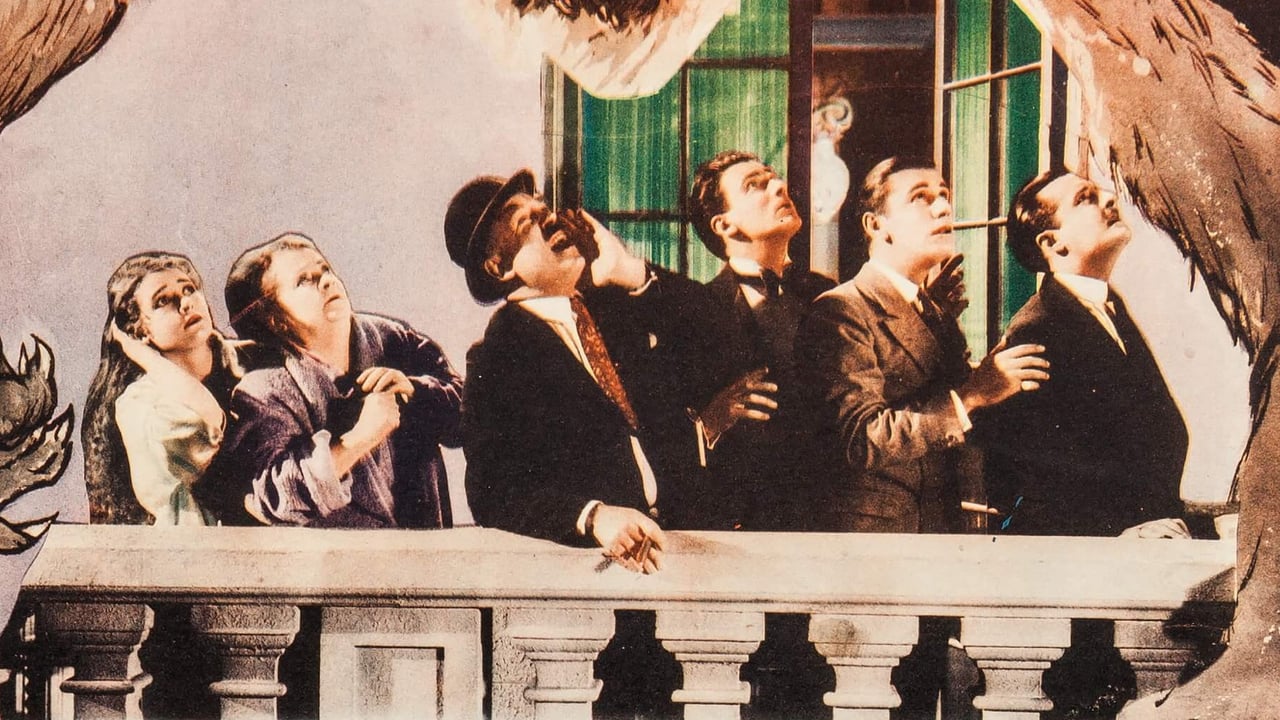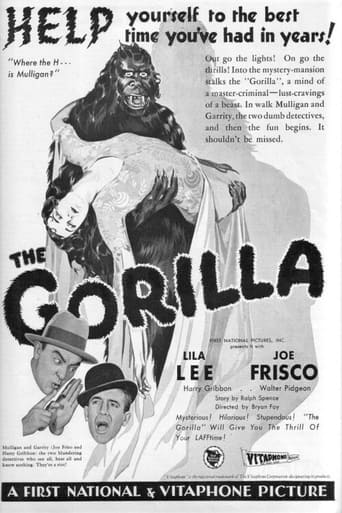



Lack of good storyline.
Excellent, a Must See
Clever and entertaining enough to recommend even to members of the 1%
View MoreThe best films of this genre always show a path and provide a takeaway for being a better person.
View MoreI've seen this so many times on here: long-winded dissertations about movies that are supposedly lost (witness "London After Midnight!"). How can someone truly discuss something that doesn't even EXIST anymore? (Isn't that something akin to various religious groups prohibiting some movie because it's blasphemous, despite the fact that no one in that group has ever seen the movie?)Three possible apologies are in order before the fact, though: 1. The previous commentator (the one who set me off on this) is old enough to HAVE seen the movie. 2. All the rest of us are wrong, and the movie IS extant (PLEASE tell us where to find it!!!) 3. Just an apology of my own, for having used this forum for a brief editorial.
View MoreRalph Spence wrote his play 'The Gorilla' in the mid-1920s, when Broadway audiences had already seen several dead-earnest thriller plays about spooky old houses full of trapdoors and masked villains. The posters for the 1925 Broadway production of 'The Gorilla' acknowledged its predecessors, by ballyhooing: 'Out-bats "The Bat"! Out-cats "The Cat and the Canary"! Out-warns "The Last Warning"!' What made 'The Gorilla' a hit onstage was the fact that it spoofed the cliches of spooky-house plays while managing to be somewhat scary on its own merits, much as 'Arsenic and Old Lace' would be a few years later. The various film versions of 'The Gorilla' downplay the thriller elements, replacing them with lowbrow slapstick comedy ... thus rendering a wildly improbable storyline even more implausible. The 1927 silent-film version deviates considerably from Spence's play. This 1930 remake (the first talkie version) is very slightly more faithful to Spence's stage production, and is so different from the 1927 silent that I have difficulty considering this a true remake. The 1927 version managed to combine thrills and slapstick very skilfully. This 1930 version also tries to be a comedy thriller ... but unfortunately it isn't very successful at either of those goals. Mean old miser Cyrus Stevens (the fine actor Edwin Maxwell) is murdered in his creepy old house. Alice Denby is his ward, played by Lila Lee in a limp performance. Along come a couple of dumb Irish police detectives. The head cop (Garrity) is played by Joe Frisco, a legendary vaudeville comedian who made very few movies. Joe Frisco was a unique Broadway character: the stories told about him are much funnier than anything he did onscreen, including in this movie. His assistant (Mulligan) is played by Harry Gribbon, an actor with some very impressive film credits who never impressed me in any film in which I've ever seen him. He's not funny here. Time to send in the gorillas. The clues indicate that maybe the murderer is a gorilla, who has wandered into the Stevens mansion. (Probably to get out of the rain.) For some reason, Garrity decides that the best way to lure the gorilla out of hiding is to get himself dressed up in a gorilla suit. (Sounds logical to me, but only if he dresses up in a FEMALE gorilla suit, and the MALE gorilla is very horny or very desperate.) Dumb assistant Mulligan is just clever enough to wonder how he'll be able to tell the phony gorilla (played by Joe Frisco in an ape suit) from the real gorilla (played by a stuntman in an ape suit). No problem: Garrity, ensconced in the gorilla cozzy, borrows a white hair ribbon from sweet Alice and ties it round his own neck. The gorilla with the ribbon is the phony. Got it? Well, of course the real gorilla finds Garrity before Garrity finds HIM. And of course the real gorilla steals the ribbon and ties it round his own neck. And of course Mulligan and several other idiots in this movie see the gorilla with the ribbon and assume that he's Garrity. Mirthful mayhem is meant to ensue, but it doesn't ensue very much. Or at all. The fact that the 'real' gorilla is played by a stuntman in a blatantly obvious ape-suit doesn't add to the fun. In one shot, I could see the buttons up the back of the 'real' gorilla's body! Also, during the sequences in which Joe Frisco's character Garrity is wearing a gorilla costume, it's obvious that the man inside the disguise is a stunt double who is much more athletic than Frisco. SEMI-SPOILER COMING. In the 1927 silent version of 'The Gorilla', Walter Pidgeon plays a handsome young man who is very helpful to sweet Alice, but in the last reel he turns out to be the dastardly villain. Walter Pidgeon is also on hand in this talkie remake, and once again he plays a handsome young man who is attentive to Alice. But this time, instead of being the surprise villain, he turns out to be (surprise!) a detective. The unattractive actors Frisco and Gribbon play defective detectives; Pidgeon is much better-looking than they are, so (of course) his detective is much more efficient and intelligent. Pidgeon usually impresses me (he was an underrated actor), but here he's as stiff and lifeless as (all together now) a dead Pidgeon. Speaking of bad puns, I kept hoping somebody in this movie would say something like 'We'd better put a tail on that gorilla' or 'If the gorilla is the murderer, the gorilla will swing'. Those lines are awful, but they're funnier than any of the terrible dialogue in this movie. As with many early talkies (especially the ones directed by Bryan Foy), the camerawork is almost nonexistent here, and the acting suffers for it: everyone in this movie (except the gorilla) seems to be concerned only with hitting their marks and speaking into the concealed microphones. The silent version of 'The Gorilla' had much better camerawork, and was much funnier. I'll rate this remake 2 points out of 10. Skip this appalling ape-fest and watch the later remake with the Ritz Brothers.
View More